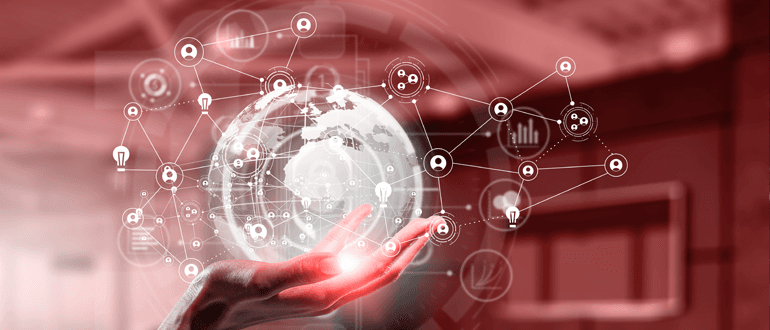
RWA Tokenization: Navigating the Trust Path in Digital Transactions
Real World Asset (RWA) tokenization has emerged as a groundbreaking concept in the fast-evolving world of blockchain and digital assets. RWA tokenization involves creating a digital representation of tangible assets on a blockchain, enabling them to be traded seamlessly. However, the journey toward a secure and trustworthy end-to-end RWA ecosystem has its challenges. This article explores the security concerns of Real World Asset tokenization and the industry's efforts to address them.
End-to-End Trust Path: The Holy Grail of RWA Tokenization Security
The security of Real World Asset tokenization hinges on establishing an end-to-end trust path between the real world and the blockchain. Ensuring security at every step of the tokenization process, including buying, selling, and trading, is vital to prevent attacks that could devalue the tokens. Yet, achieving this security property is no easy feat, especially when dealing with the complex interaction between computing systems and the real world.
Consider the challenge of establishing trust between commodity computing systems and human users. Securing the final step of the trust path requires rare and secure hardware, highlighting the intricacies of achieving end-to-end trust in modern computing systems.
Bridging Trust Gaps in Digital Transactions
Real World Asset tokenization involves multiple parties, including token issuers, custodians of real-world assets, and token users. A trust gap arises between the digital and physical realms at each interaction. The strength of the Real World Asset tokenization process is only as robust as the weakest link among these parties and their interactions.
Key Questions:
- How do we assure the integrity of real-world assets through cryptographic primitives in blockchains?
- How can users ensure their purchased RWA token represents an authentic, real-world asset?
Technologies to Bridge the Trust Gap
Several technologies aim to bridge the trust gap between the digital and physical worlds in Real World Asset tokenization. The most prominent solution involves using oracles, acting as trusted entities that vouch for the integrity of real-world assets on the blockchain. However, relying solely on oracles introduces vulnerabilities, emphasizing the need for secure solutions.
Trusted Execution Environment (TEE) - based oracles emerge as a promising approach. TEE provides a secure execution environment, isolating software from the rest of the computing system. By using hardware-based TEEs, the trust base narrows down to the hardware and the Oracle software, minimizing the potential attack surface.
Real-Object Authentication: An Intriguing Approach
Another avenue to bridge the trust gap involves leveraging real-world object authenticity. Two approaches stand out: measuring intrinsic properties of objects for authentication and inscribing unique keys into real-world objects. These methods hold promise but are still in their early stages of development.
Institutional Trust: An Interim Solution
In the absence of mature technologies, many Real World Asset tokenization projects rely on institutional trust to bridge the gap between blockchain and the real world. Institutions must be trustworthy throughout the trust path for this interim solution to be effective, and each step must undergo rigorous security evaluations. Stakeholders and users must also be informed of their reliance on institutional trust.
Consider the example of the gold-pegged Coin ($GPC) on the Klaytn blockchain. This initiative utilizes the Korea Gold Exchange to back its tokenized gold, which is executed through trustless smart contracts audited by reputable web3 security firms. While institutional trust is a temporary solution, it requires consistent monitoring and upholding of trustworthiness for a secure RWA ecosystem.
What If Trust Breaks?
Institutional trust serves as an interim solution, but its failure at any point could lead to a security gap between perception and reality. Traditional institutions aren't the sole trust bridge, as demonstrated by platforms like Elysia, which incorporates a DAO for decentralized governance, adding an extra layer of trust.
UFUND: Revolutionizing Funding
As the landscape of Real World Asset tokenization continues to evolve, innovative projects like UFUND are emerging to revolutionize funding. UFUND introduces a fresh perspective to the world of decentralized finance (DeFi) by combining security and innovation. While details about UFUND are beyond the scope of this article, it's worth keeping an eye on projects that aim to reshape traditional funding models through blockchain technology.
Frequently Asked Questions
What is the security endgame for tokenized RWAs?
The ultimate goal is establishing an end-to-end trust path between the real world and the blockchain. However, achieving this goal is complex due to the prevalence of commodity computing systems and the inherent challenges in securing interactions with the real world.
What upcoming technologies will help bridge the RWA trust gap?
Trusted Execution Environment (TEE)--based oracles are crucial in minimizing the risk of attackers compromising the oracle service. Additionally, efforts are being made to measure the intrinsic properties of assets or inscribe unmodifiable keys through a micro-3D printing process for authentication. However, these technologies are still in their early stages.
What is the best interim security and trust solution for RWAs?
Until advanced technologies are ready for commercialization, relying on institutional trust is the next best solution. Institutions must be trustworthy, every step of the trust path must be rigorously evaluated, and stakeholders and users must be fully aware of their reliance on institutional trust.
In conclusion, Real World Asset tokenization holds immense potential but has significant security challenges. As the industry explores solutions like TEE-based oracles and real-object authentication, the role of institutional trust remains crucial in ensuring a secure and trustworthy ecosystem.
Projects like UFUND further exemplify the ongoing innovation in the blockchain space, offering new possibilities for decentralized funding. As the journey of Real World Asset tokenization continues, a careful balance between security, innovation, and trust will pave the way for a robust and transformative ecosystem.

0 Comments